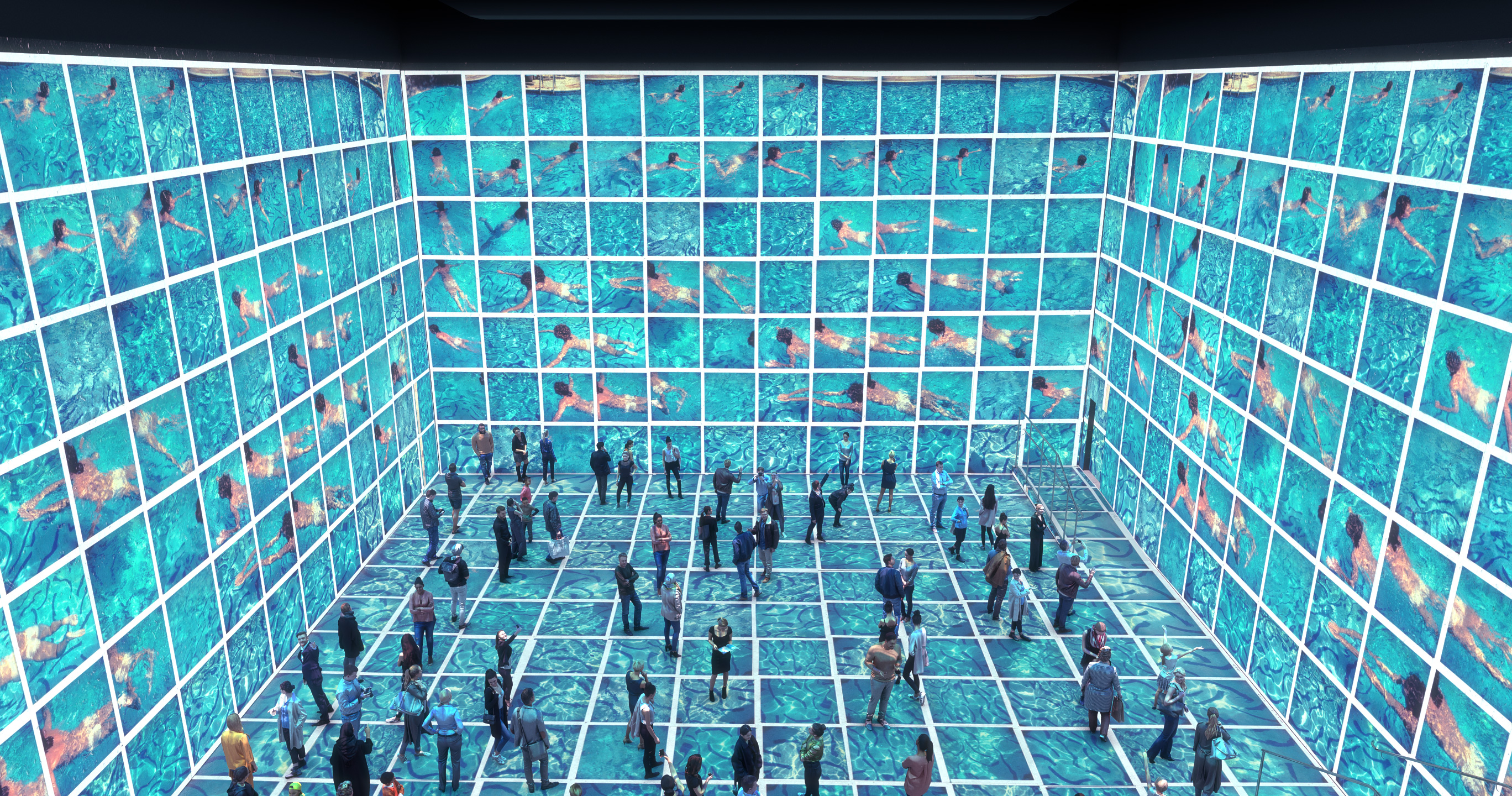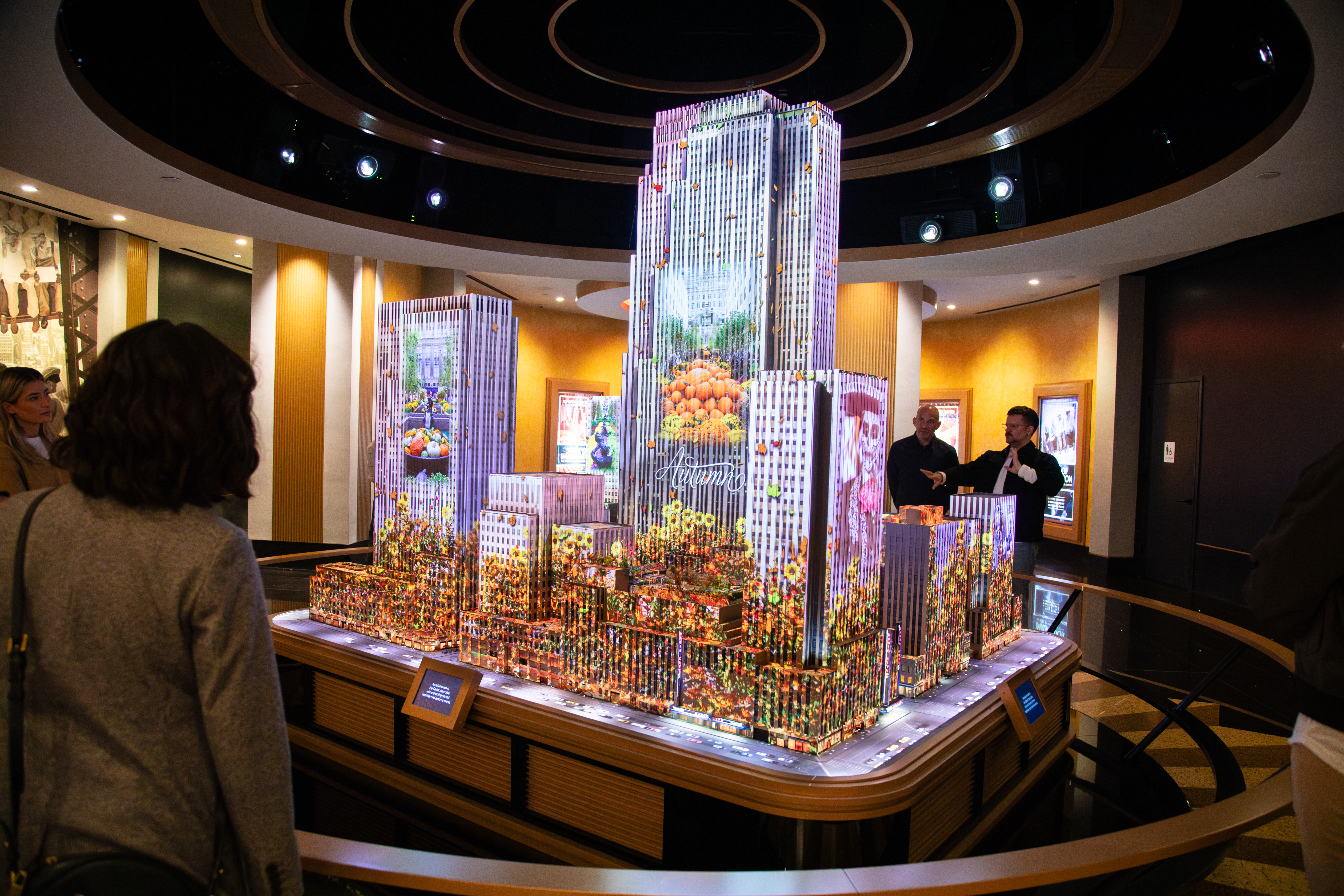Five reasons why museums and cultural spaces are embracing immersive experiences

Museums and cultural spaces are changing. Today’s audiences are no longer satisfied with simply viewing artifacts behind glass or learning at a distance - they expect to feel connected, to participate, and to be immersed. Driven by a generation raised on digital media, interactive entertainment, and 24/7 connectivity, visitors now seek experiences that are dynamic, engaging, and emotionally resonant.
This shift in expectations is prompting museums and cultural spaces to evolve. To stay relevant, they’re moving beyond traditional exhibitions and embracing immersive art, digital installations, and interactive storytelling that invite deeper engagement and real-time participation.
In this blog, we explore why immersive experiences are becoming essential in the cultural sector, looking at everything from audience psychology through to the role of cutting-edge AV technology, and examining how immersive, interactive, and location-based installations are transforming the museum experience.
1 - To match evolving audience expectations
The most compelling reason for the rise of immersive experiences? Audiences are demanding more than ever before.
Today’s visitors want:
- Personal agency: to shape or influence their journey through a space
- Emotional impact: to feel deeply moved or inspired
- Sensory engagement: to be surrounded by sound, visuals, and interaction
- Social moments: to share content-worthy experiences online
Examples of experiences that deliver:
- Drunk Elephant Immersive Experience: A vibrant, motion-reactive brand activation created by Disguise Services, featuring real-time visuals and interactive content that responded to guest movement. Museums can take inspiration by using similar gesture-based interactions to create playful, engaging moments that appeal to younger, experience-driven audiences.
- The Hidden Forest Experience at Gardens by the Bay in Singapore invites visitors into a lush, responsive garden environment that reacts to their movement, combining ambient sound and projection mapping.
These immersive art experiences don’t just meet expectations, they raise the bar for what cultural engagement can be.
2 - To unlock new creative and operational possibilities
Museums are turning to immersive technologies not just for visual impact, but to tell deeper stories, stay adaptable, and meet increasing operational demands.
Why this matters:
- Traditional exhibits have creative limits. AV tech enables more flexible, layered storytelling.
- Immersive tools like real-time rendering or remote content control help venues manage updates and adapt experiences easily.
- These tools offer scalable solutions that can be reused, reprogrammed, or localised for different audiences and locations.
Case in point:
- Lightroom London’s David Hockney show used Disguise to deliver immersive content that could be updated in real time and adjusted spatially, offering creative freedom and control.
- The Indonesia Pavilion at Expo 2025 also used our platform to demonstrate how immersive systems support large-scale storytelling that’s consistent, high-impact, and globally relevant.
Immersive technology is ultimately the enabler for museums to create compelling, cost-effective, and sustainable experiences that evolve with their audiences.

Lightroom London: David Hockney's Bigger & Closer (not smaller & further away) by 59 Studio, powered by Disguise
3 - To deepen emotional and cognitive engagement
Immersive and interactive installations are more than flashy tech - they’re psychologically powerful.
Why it works:
- Mirror neurons drive empathy and immersion when people engage directly.
- Active participation increases memory retention and personal connection.
- Multisensory input strengthens emotional resonance.
It’s scientifically proven that visitors are more likely to remember and return to exhibitions where they feel part of the story. Whether they're walking through a digital forest or sketching alongside projected masterpieces, they become emotionally-connected participants - not just spectators.
4. To create location-based relevance
Museums and heritage attractions are increasingly turning to location-based installations - experiences that are rooted in their environment through geolocation, AR, or site-specific content.
Why location-based installations matter:
- They highlight unique stories tied to a specific place
- They can blend physical and digital worlds, making culture feel more alive
- They drive repeat visits with evolving, personalised content
Examples:
- Top of the Rock (New York City): Disguise partnered with Electrosonic to deliver a six-minute immersive welcome experience inside Rockefeller Center. Using real-time projection mapping and responsive visuals, the installation transforms the historic site into a living narrative, offering context, emotion, and connection before visitors even reach the observation deck.
- The Hidden Forest (Gardens by the Bay, Singapore): A responsive digital garden that reacts to visitor movement, seamlessly integrating projection and ambient sound to root the experience in its natural setting.
By anchoring immersive experiences in place, institutions can build stronger connections between visitors and their surroundings.

Top Of the Rock, New York City, powered by Disguise
5 - To boost attendance, engagement, and long-term value
From a business and impact perspective, immersive experiences offer measurable benefits:
- Increased foot traffic and extended dwell time
- Wider media coverage and viral social sharing
- Deeper visitor satisfaction and higher likelihood of return
Ultimately, by evolving into experience platforms, museums can future-proof themselves against declining attention spans and rising competition from digital media, ensuring visitors stay for longer and return in the future.
Museums as platforms for immersive innovation
This shift toward immersive art experiences is not a passing trend—it’s a strategic response to a changing cultural landscape. Institutions that embrace it are seeing real results: more engaged visitors, stronger stories, and renewed relevance.
As Alex Wills, Chief Experience Officer at Disguise, explains:
"Visitors want to feel a genuine connection to the subject matter... when AV is seamlessly integrated with story and space, the result is utterly magical."
Explore more: The Future of Immersive Experiences
Want to dive deeper into how storytelling, spatial design, and cutting-edge technology are shaping the next generation of cultural experiences?